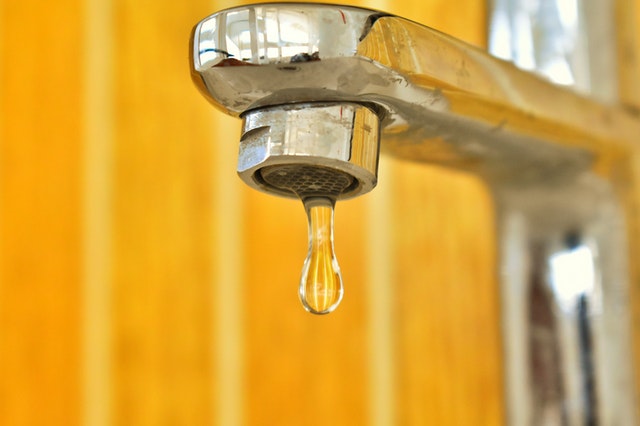Digitalisation of Water Companies: Transforming the Customer Experience
From climate change to shortages in water resources to population growth, the water industry is constantly faced with its fair share of challenges. But some of the biggest challenges to hit the industry in recent times is heightened customer expectations and the demand for more personalised customer experiences.
Not only do consumers want a continual supply of clean and safe water to maintain their health, but they also want a seamless and tailored customer experience. Despite not offering the same service, the likes of Amazon and Google have set the bar high when it comes to effective customer journeys and the great British public have become accustomed to it. So much so, that they now expect this same level of service to be provided to them by all of their suppliers; water companies included.
However, while the implementation of modern-day technologies, such as AI and Workforce management software (WFM) have been proven to help improve customer experience, reduce costs and increase employee productivity, many water companies are still somewhat tentative about utilising them.

Dealing with a loss of supply
When a loss of supply occurs, whether by natural disasters, repair work or infrastructure damage, water companies can experience spikes in the volume of customer queries they receive. Unsurprisingly, customers will be eager to know that their water company is aware of the problem, what steps are being taken to solve the problem and a timeframe for when their supply will be restored.
A lot of water companies continue to rely on traditional call centres and human agents to handle this type of inbound customer query. Unfortunately, using call centres as a frontline measure has been proven to not always be the most viable option.
When the ‘Beast from the East’ hit the UK in 2018, it left more than 200,000 consumers without a water supply for more than four hours and tens of thousands of households without a supply for days, according to reports by Ofwat.
The report, which looked at how water companies dealt with the impact of the storm also found that water companies were ‘slow in their response to customers concerns’ with only 60% of affected customers receiving direct communication from their water company. It seemed that few companies had sufficient technological systems and staff numbers in place to handle such a sudden increase in enquiries. Unfortunately, this led to long wait times, unanswered questions and dropped calls which caused immense customer frustration and upset.
If too many instances of poor and disjointed customer experiences continue to occur without signs of improvement, they can have damaging effects on water brands and can lead to a significant loss of custom to their competitors.

Technology is the key
Last year, water companies’ customer service performance was put under even greater scrutiny, when Ofwat introduced a new set of regulations- with significant penalties for those who failed to meet them. As part of these regulations, water companies are now expected to offer at least five communications channels (three of which must be online) and all-round company resilience is to be expected, which includes customer service.
Given this change to the regulatory landscape, water companies need to show that they can adapt to these new regulations quickly to be compliant and to avoid fines. Despite there being a resistance to change by some, there’s no denying that technology will play an essential part in helping water companies to comply with Ofwat’s regulations and meet their customer's expectations.
Cloud-based technologies, in particular, have become increasingly popular with utility companies wanting to improve their customer journey in recent years. Cloud-based workforce management software such as Salesforce, for instance, can provide customers with a more streamlined service by linking multiple systems into one cloud base solution. This technology is able to create schedules and assign jobs to engineers, create customer profiles which show all interactions and provide updates throughout the repair work.
Cloud solutions such as these can be a fantastic resource for water companies by enabling them to tailor their platform according to their own operations and requirements and in return, helps their employees to provide a more enhanced customer journey.
It’s hard not to mention AI when talking about technology these days, but it too can also be a very valuable tool for the water industry to utilise. Technology with AI capabilities can help to leverage the wealth of data that water companies have on their consumers to create a more personalised experience. For instance, it could be used to inform customers of service interruptions in their area, to optimise their energy usage or to identify vulnerable customers who require priority assistance.
AI can also be used to automate repetitive tasks so their operatives have more time to focus on complex cases and can even be used to predict potential water main breaks. This can help the water company to prioritise repair work and reduce the number of disruptions to customers, which will ultimately retain them.
Interactive Voice Response (IVR) technology such as Hexagon, is another integral tool that water companies can introduce into their call centres. This technology can send service updates and alerts directly to customers based on their postcodes when there is a crisis or fault. This ensures that the customers have the answers to their questions without needed to reach out themselves, which can help to reduce the influx in call traffic.

Human contact is still essential
With capabilities such as these, technology should be seen as an ally to the water industry and not something to be feared or disregarded. However, while the algorithms of AI and cloud-technology can be continuously adapted and altered to suit the needs of both the customer and the business, water companies, at least for now, can’t be fully automated.
While technology might be able to do it all, they aren’t able to build strong relationships with customers and demonstrate empathy in the same way that a human employee can. This human ability can be particularly crucial during emergency situations when a customer’s wellbeing may be at risk.
In other words, to successfully improve customer experiences, you need collaboration between technology and humans to provide the consumers with the best of both worlds.
If water companies invest in emerging technologies that can help to streamline processes, update customers, centralise information and help their employees to make well-informed decisions on which actions to take, the benefits inevitably cascade down to their customers. But in order for this to happen, they first need to empower their employees by providing them with the training and tools they need to use this emerging technology to its full potential. Skipping this step will only lead to frustrated employees and customers, costly errors and delays in implementation of repairs and updates.
In an era where seamless customer experience is a minimum consumer expectation, it seems that water companies have no choice but to embrace new and innovative technologies. While it might seem like a lot of change all at once, it’s important to remember that golden rule; “the customer is always right”. If they want a more personalised customers experience, it would be foolish not to try and give it to them.
25th September
Industry Insight
Related insight
Related News
Looking to
transform?
Quicklinks

Address
Deltra Group
52-54 Gracechurch St
London
EC3V 0EH
Contact
+44 (0)207 375 9500
info@deltragroup.com



